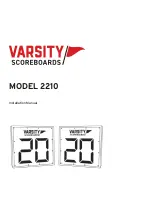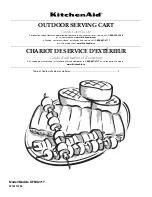
A safety margin is required as the board and foil will sink to some degree when the
rider gets onto the board. To prevent any risk of collision with a reef or a shoal, it
is strongly recommended to get dragged away from the shore using the kite while
keeping the board and foil and its side, until reaching deep enough water.
When heading back to the shore, it is necessary to get of the board at the same distance
from the shore that had been required to start safely. Again, it is recommended to
walk or use the kite to get dragged back to the shore. During these phases, the board
must be kept on its side under your arm.
TO KEEP THE RRD H-FLIGHT HYDROFOIL IN GREAT CONDITION :
After every use, make sure you always:
•Clean and rinse all the parts of the kitefoil before storing them.
•Take apart the front and rear wing and fuselage from the mast.
•Protect the parts by storing them in their original packaging or using another
appropriate protection.
•If chips, dents, or bumps appear following an impact, fill with epoxy resin or primer
and sand until the local surface is smooth and clean. It is strongly recommended to
let a professional handle these kinds of repairs.
•Make sure the surface of the blades remain smooth and clean. The kitefoil works
using a dynamic equilibrium and the flow around the wings can be very sensitive to
any damages. Sudden stalling can happen if the surface condition of several parts are
compromised. Stalling the foil can unsettle the rider and result in abrupt falls.
IMPORTANT NOTE
Our H-flight hydrofoil is composed of Prepreg Carbon parts (Fuselage, Front and Rear
Wings) and Aluminium parts (Mast and Base Plate) assembled together by stainless
steel screws.
While the Carbon parts are also equipped with stainless steel plates where the screws
are attached, the Aluminium parts have a direct inner female thread where you screw
the stainless steel screws. Aluminium threads and Stainless steel screws used in Sea
Water will create an oxidation process that must be prevented in order to mantain the
assembling and disassembling process and easy one to be performed and keep a long
product lifetime.
To help this process we strongly recommend to follow this maintenance precautions:
After use, always disassemble the fuselage from the mast, and the base plate from
the mast and rinse the Aluminium screw holes with fresh water.
In order to keep the Aluminium screw holes properly maintained and free from
oxidation, we strongly recommend the use of this product: Tef-Gel made by TIKAL,
(corrosion eliminator GEL) that should always be spread around the female threaded
holes in the Aluminium parts.
Summary of Contents for DOLPHIN1
Page 8: ......
Page 9: ...30 mm 2 4 5 1 3 CORRECT POSITION FOR 3 DIFFERENT SCREW LENGTHS...
Page 11: ......
Page 14: ......
Page 15: ...Mast Fuselage Front Wing Rear Wing Base Plate...


































